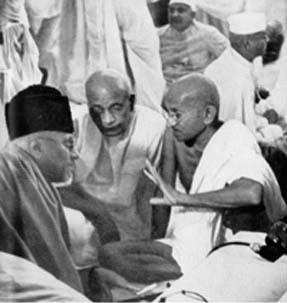
The Quit India Movement was launched by Gandhi in 1942 as an all-out campaign of civil disobedience to compel the British to leave. While some leaders in the Congress initially did not agree with the proposal, Sardar Patel was of the view that an all-out rebellion would galvanize the people of India and force the British to concede that continuation of the colonial rule found no support in India.
At the urging of Gandhi, the All India Congress Committee approved of the campaign on 7th August 1942. Patel though suffering from ill health appealed to the masses to refuse paying taxes and participate in civil disobedience. Speaking to a large crowd of over 100,000 people gathered at Gowalia Tank in Bombay, Patel called for mass protests and a shutdown of civil services. For his role in the protest, Patel was arrested on 9th August 1947 and imprisoned with the entire Congress Working Committee from 1942 to 1945 at the fort of Ahmednagar.
The Quit India movement turned out to be the most serious rebellion against the British since the Revolt of 1857. Such was the impact of this movement that at the time when Sardar was released in the year 1945, the British had started preparing proposals to transfer power to the Congress and leave.
A long cherished dream appeared to be finally within grasp.